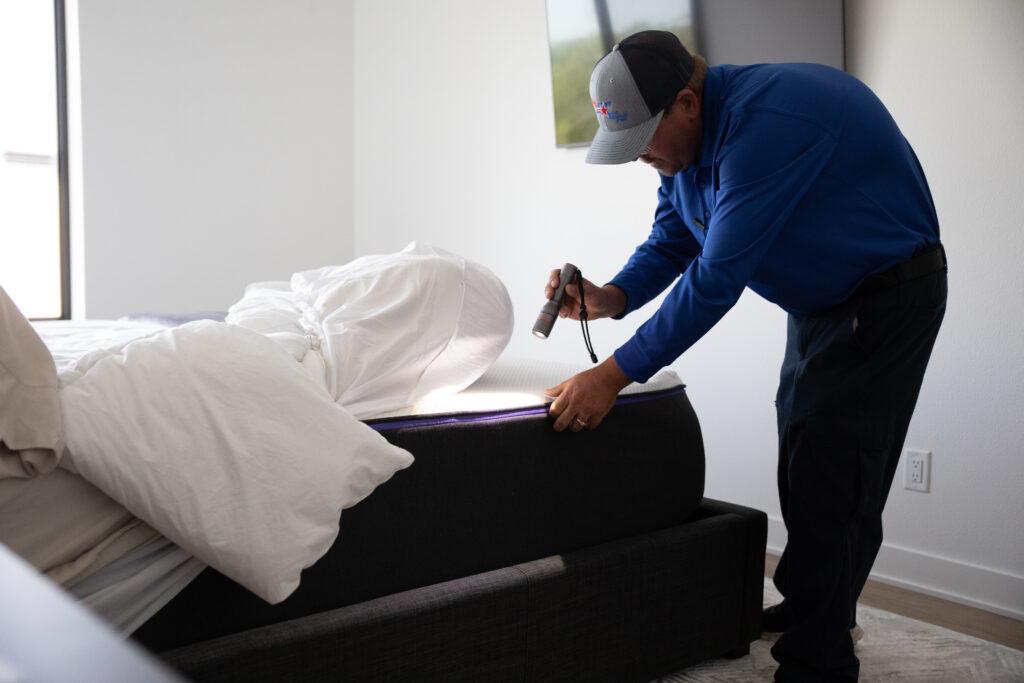
Image Source: Google
Bed bugs are a common nuisance that can disrupt your peace and comfort at home. These tiny insects can multiply rapidly and infest your living spaces, causing discomfort and potential health risks. If you want to hire the best bed bugs inspection service then, you can check this out.
To prevent a bed bug infestation or address one that already exists, it is crucial to conduct regular inspections of your living areas. This comprehensive guide will provide you with effective inspection techniques to help you keep those pesky bed bugs at bay.
Understanding Bed Bugs
Before diving into inspection techniques, it is essential to understand what bed bugs are and how they operate. Bed bugs are small, reddish-brown insects that feed on the blood of humans and animals. They are nocturnal creatures that hide in cracks and crevices during the day and come out at night to feed.
Here are some key traits of bed bugs:
- Flat, oval-shaped bodies
- No wings
- Visible to the naked eye (adults are about the size of an apple seed)
- Prefer to hide in mattresses, box springs, bed frames, and other furniture
Common Signs of Bed Bug Infestation
Being able to recognize the signs of a bed bug infestation is crucial for effective inspection. Here are some common indicators that you may have bed bugs in your home:
- Reddish or brownish stains on bedding or furniture (from bed bug excrement)
- Small bloodstains on your sheets or pajamas
- Musty odor in the room
- Visible shed skins or eggs
- Multiple bug bites on your skin
Effective Bed Bug Inspection Techniques
Regular inspections of your living areas can help you detect bed bugs early and prevent a full-blown infestation. Here are some effective techniques for inspecting your home for bed bugs:
1. Visual Inspection
A thorough visual inspection is the first step in detecting bed bugs. Use a flashlight and magnifying glass to check the following areas:
- Seams and folds of mattresses and box springs
- Cracks and crevices in bed frames and furniture
- Behind wall hangings and electrical outlets
- Under carpets and rugs
2. Bed Bug Dogs
Bed bug detection dogs are trained to sniff out live bed bugs and their eggs. Utilizing the keen sense of smell of these dogs can be a highly effective way to detect bed bugs in your home.
3. ClimbUp Interceptors
ClimbUp Interceptors are specially designed traps that can be placed under the legs of your bed or furniture. These traps prevent bed bugs from climbing onto your bed and can help you monitor and detect any bed bug activity.
Preventive Measures
While regular inspections are crucial for detecting bed bugs, it is equally important to take preventive measures to avoid infestations in the first place. Here are some preventive steps you can take:
1. Encase Mattresses and Box Springs
Use specially designed bed bug-proof encasements to cover your mattresses and box springs. This will prevent bed bugs from hiding in these areas and make inspection easier.
2. Reduce Clutter
Decluttering your living spaces can eliminate hiding spots for bed bugs and make it easier to detect any signs of infestation.
3. Vacuum Regularly
Regular vacuuming can help remove bed bugs and their eggs from carpets, rugs, and furniture. Be sure to dispose of the vacuum bag in a sealed plastic bag to prevent bed bugs from escaping.
Remember, early detection and prompt action are key to preventing and controlling bed bug infestations. By implementing the inspection techniques and preventive measures outlined in this guide, you can keep those pesky bed bugs at bay and enjoy a restful night's sleep.